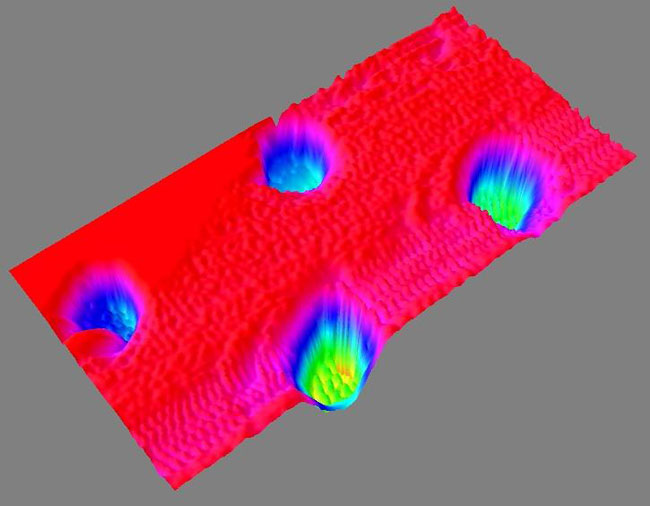NASA Gets First Image of a Mars Dust Particle

NASA's Phoenix Mars Lander has taken its first-ever picture of a single particle of rusty Martian dust with one of its microscopes.
The speck of dust was shown at a higher magnification than anything outside of Earth has been imaged before. The rounded particle measured only about one micrometer, or one millionth of a meter, across.
"Taking this image required the highest resolution microscope operated off Earth and a specially designed substrate to hold the Martian dust," said Tom Pike, a Phoenix science team member from Imperial College London. "We always knew it was going to be technically very challenging to image particles this small."
The device that imaged the dust speck is called an atomic force microscope, which maps the shape of particles in three dimensions by scanning them with a sharp tip at the end of a spring.
The atomic force microscope can detail the shapes of particles as small as about 100 nanometers, about one one-thousandth the width of a human hair. That is about 100 times greater magnification than seen with Phoenix's optical microscope, which made its first images of Martian dirt about two months ago. Until now, those images held the record for the most highly magnified images to come from another planet.
And this won't be the last dust particle that Phoenix will image. "After this first success, we're now working on building up a portrait gallery of the dust on Mars," Pike said.
Dust is a ubiquitous substance on Mars, coating the surface and giving it its rusty red hue. Airborne dust particles also color the Martian sky pink and feed storms that regularly envelope the planet.
Get the Space.com Newsletter
Breaking space news, the latest updates on rocket launches, skywatching events and more!
The ultra-fine dust is the medium that actively links gases in the Martian atmosphere to processes in Martian soil, so it is critically important to understanding Mars' environment, the researchers said.
The $420-million Phoenix mission is analyzing the dust and subsurface ice layers of Mars' arctic regions to look for signs of potential past habitability.
The particle seen in the atomic force microscope image was part of a sample scooped by the robotic arm from the "Snow White" trench and delivered to Phoenix's microscope station in early July.
Join our Space Forums to keep talking space on the latest missions, night sky and more! And if you have a news tip, correction or comment, let us know at: community@space.com.

Andrea Thompson is an associate editor at Scientific American, where she covers sustainability, energy and the environment. Prior to that, she was a senior writer covering climate science at Climate Central and a reporter and editor at Live Science, where she primarily covered Earth science and the environment. She holds a graduate degree in science health and environmental reporting from New York University, as well as a bachelor of science and and masters of science in atmospheric chemistry from the Georgia Institute of Technology.









